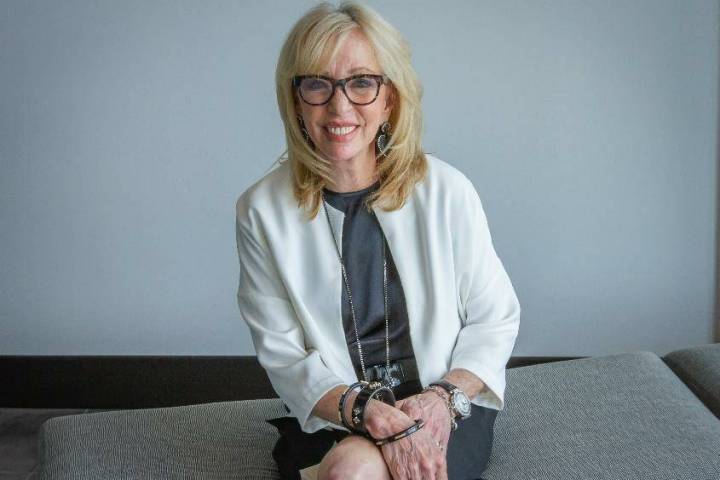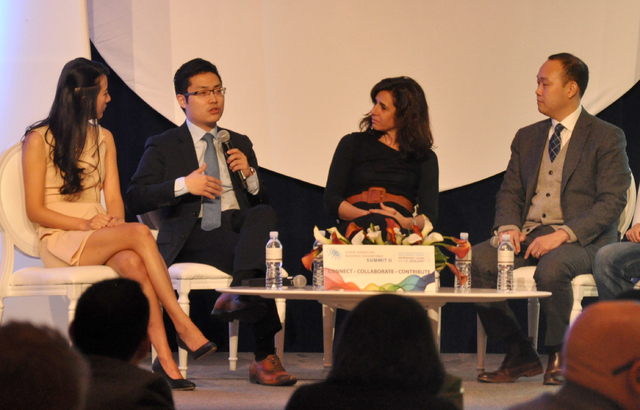
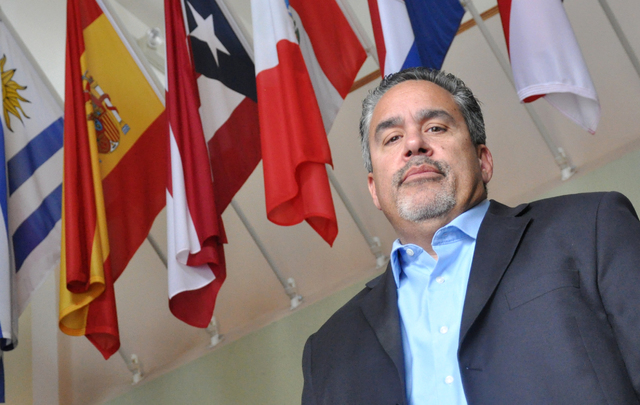
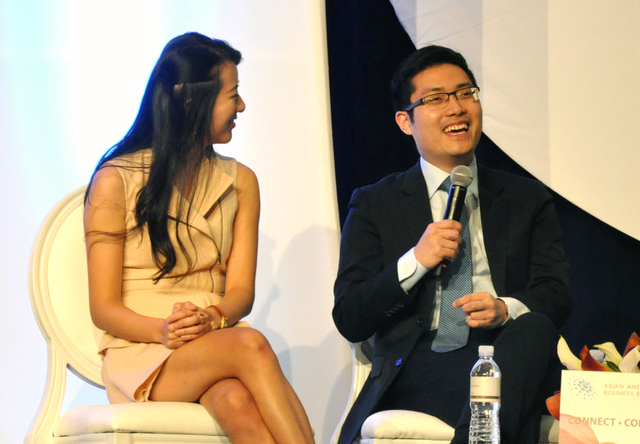
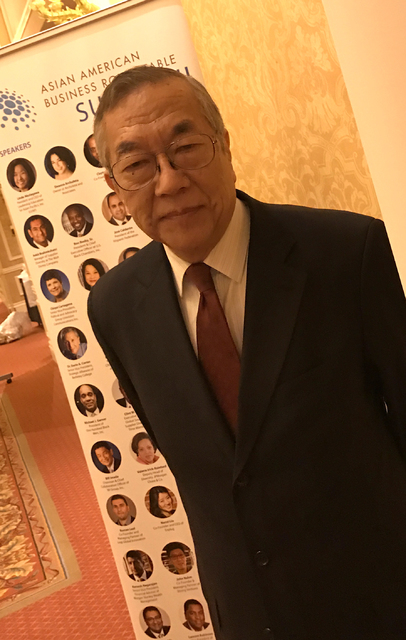
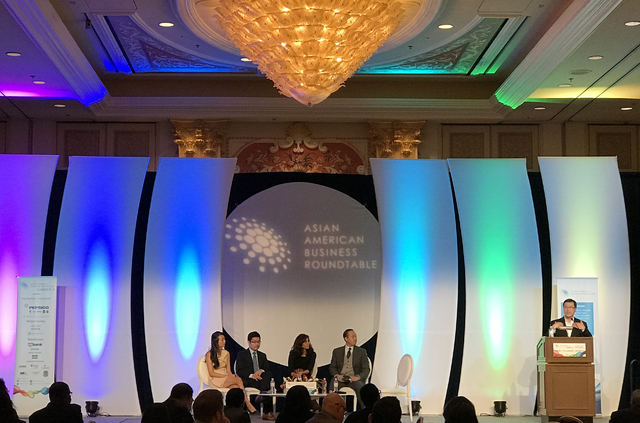
Race, ethnicity and gender still wield great influence in nearly all sectors of American life, and the world of business is not excepted.
Workforce statistics and surveys of high-level positions in the nation’s largest companies consistently reveal sluggish progress, at best, in efforts to create a business community that reflects the broader world beyond the C-suite club, whose members remain overwhelmingly white and male. Only five current Fortune 500 CEOs are black and only 21 are women, according to Fortune magazine, and other minority groups are no better represented.
Causes of these social disparities are many and complex, ranging from self-imposed constraints to passive bias or even unabashed prejudice.
“Bigotry has been around a long time and I don’t suspect it is going to go away anytime soon,” said Peter Guzman, president of the Las Vegas Latin Chamber of Commerce. “There are going to be biases. It is a fact of life. But none of these things are permanent.”
“The Asian population is the fastest growing in the region, I think we are about 10 percent of the population now,” said Sonny Vinuya, president of the Las Vegas Asian Chamber of Commerce. “I think there is a big movement now for diversity in the workplace, especially in areas like health care and hospitality. We have never seen a problem with the corporations here. But like anything else, there is still work to be done, especially at (the upper management and executive level).”
Strategies for all minority businesses and individuals to advance a collective presence in the broader corporate community through partnerships and cooperative initiatives was the focus of the Asian American Business Roundtable, hosted at The Venetian, Jan. 11-13.
“When we founded the Asian American Business Development Center (in 1994), the idea was to assist Asian-American business in getting to the mainstream marketplace by utilizing public and private sector resources,” said John Wang, founder of the organization that hosts the summit. “To be more competitive and operate in a mainstream marketplace.
“And so I think the landscape in the last 20 years has changed quite a bit. Now you find Asian-American businesses in all types of industry. You see big and small companies — it gives you the idea there is a tremendous change going on.”
Wang said the center launched a program in 2001 called 50 Outstanding Asian-American Businesses, which was the genesis of the summit.
“Through that program, we have honored over 700 people,” he said. “From that we began to develop this round table — that’s what brings us here. We have it is a platform that will get us to connect and collaborate.”
New majority
According to demographic estimates by the U.S. Census Bureau, people designated as white will soon make up less than half of the country’s total population for the first time since European incursion beginning in the late 15th century.
In our newest generation, that moment has already arrived. The bureau announced that in 2014 the majority of children younger than 5 in the country were designated as a race/ethnicity other than white for the first time in history.
This new majority — a collection of all residents designated as other than white — has the opportunity to obtain increased influence in the nation’s corporate boardrooms, according to Wang.
“The new majority, in a way, is an emerging market,” he said. “Many corporations have recognized that Latino, Asian American, and African American communities represent tremendous business opportunities through their collective purchasing power.
“In 2019, according to one study, it will reach 4.1 trillion, annually. It is the third largest economy in the world, behind the United States and China. It is important, I think, for corporations to recognize this and work with people in these communities and then develop the markets.”
The game of risk
Life invariably poses challenges — both internal and external — to all human endeavors, and many of these barriers are familiar to us all, independent of gender, ethnicity, innate intelligence and abilities or financial means. But others tend to be associated with particular cultural experiences, and one that recent immigrant families face — ironically — is an aversion to uncertainty, according to summit panelist Tim Hwang, CEO of the Washington D.C.-based technology company FiscalNote.
“There is a massive aversion to risk taking (in the Asian American community),” he said. “I think this is broadly applicable to immigrant families where a lot of parents took a tremendous amount of risk in coming to the country and so they push their children to be in more stable environments. To take on certain types of careers, join certain types of companies. Unfortunately, American is a place that values — heavily — risk taking.”
Hwang said it is inherently difficult to align a tendency toward risk-aversion with aggressive approaches that can lead to entrepreneurial business accomplishments. “I think the more the younger generation can see success, where people have done it before, the more likely they are to take that risk and make it happen,” he said.
“I never mind taking risks, I love doing new things,” said AABR panelist Nanxi Liu. “There’s nothing to lose.”
Liu, 25, is the co-founder and CEO of Los Angeles-based software technology company Enplug, now the top platform to manage digital displays inside of businesses. Her projects at the University of California, Berkeley included building Arduino computer chips that allowed campus lamps to turn off and on based on light settings and starting a biotech company that develops polymers to eliminate the need for vaccine refrigeration.
“I talk about the stuff that actually worked, but I have failed at more things than probably anybody I know,” she said and laughed. “I think I’ve had so many successes because for every success I’ve had, I’ve had 10 failures.”
Liu was raised by extended family members in China’s rural Jiangxi province before emigrating at the age of 5 to be reunited with her parents, who were graduate students in the U.S.
“We lived in subsidized housing, we had nothing,” she recalled. “So for me, the worst that could happen (by taking a business risk) is (that) I could lose it all and sleep on a friend’s couch. And that’s not too bad.
“I used to think my parents were really conservative and risk-averse, but then I realized that, no, they’re not. They came here as immigrants. For them to give up their life — for them to just drop it all and start over in the U.S. — they had to be able to take risks.”
Hwang says he believes a common scenario is for new immigrants to become cautious and to instill that sense of caution in their children. “Ironically, the folks that came to America are the ones that are most risk-averse, because they are fleeing political persecution or whatever the case may be,” he said.
Post-racial illusions
When President Barack Obama delivered his farewell speech in Chicago Jan. 10, he addressed the issue that will forever be entwined with his legacy — race.
“After my election, there was talk of a post-racial America,” he said. “Such a vision — however well-intended — was never realistic.”
The nation’s racial divide seems predicated in part, on vastly differently perceptions about the role race and gender play in shaping our professional lives. A 2016 Pew Research Foundation poll revealed that 22 percent of white Americans believe minorities are treated less fairly than their own ethnic group in the workplace, as opposed to 64 percent of black Americans who perceive an inequity of treatment.
“I think America is in a place now where there is certainly much less explicit bias in the streets — overall most people have some level of political correctness and decency,” Hwang said. “But what that leads is a much more malignant form of racial bias.
“You see certain levels of bias already — in terms of employment or an entrepreneur trying to raise capital. You see it in education, with different expectations based on the race you are. So it is a very pernicious thing. People assume that because you are not shouting an expletive at somebody’s face that nobody’s racist anymore, but there is still a tremendous amount of institutional bias, I think, in the system.”
This difference of perception extends to issues of gender, as well. Eighty-four percent of women feel they earn less than men doing comparable work, according to a 2013 NBC News/Wall Street Journal poll, and 65 percent of men agree. Nearly half of women surveyed in the poll report that they have experienced discrimination in the workplace.
“Being a minority, being young, being a female — when I started the company, there were definitely prejudices I had to overcome,” Liu said. “But I also had to overcome those barriers growing up, too. So I was used to it. My mom always told me, ‘because of who you are, you are going to have to work twice as hard to get to the same place.’ I really lived that. I always focused on doing 10 percent more than everybody else, so that anytime somebody judged me, they would maybe overlook what I looked like and instead focus on the accomplishments.”
Liu said she understands that when meeting a prospective investor, she faces challenges due to her gender that are not shared by male colleagues.
“I know that I have 30 seconds to make an impression and gain that person’s trust and respect. I have to — much faster — build that credibility.”
She says she tries to help create an easier environment for the emerging generation and teammates who come from multicultural backgrounds.
“I put a lot of pressure on myself — because of where I am — that I need to keep pushing, keep opening doors for my fellow female entrepreneurs and executives,” she said. “I need to make sure I am a role model for my teammates and other young Asian Americans. That means a lot to me, but it’s hard.
“I see the successes of some of my investors — two female Asian Americans, (who are) incredible and such an inspiration. If I could inspire or empower somebody else, then that is what I will say is my biggest success.”
Money matters
A financially challenged childhood did not hold back Liu, but summit panelist Chieh Huang points to a similar experience as part of his road to success.
“For me, factors largely drawn upon (were) — not racial factors — but poor and rich factors,” recalled the co-founder and CEO of Boxed Wholesale, a New York-based fulfillment company that ships wholesale purchases to homes and businesses. The company opened a North Las Vegas fulfillment center in 2013.
“I grew up very poor, early on,” he said. “If I needed to solve a problem, if I needed to get better at school, I could not get a tutor and had to figure it out myself.
“If I wanted to buy a toy — I was not going to get an allowance — I had to shovel driveways during the winter to get enough money to get that (toy). So that lack of resources actually really benefited me later in life. The knowledge (that) if I wanted to make something happen, it will be up to me and the team I surround myself with. It will never be gifted to me. (That) really played into why I am here today, I think.”
Opening the boardroom doors
As this AABR summit — the second in successive years — drew to a close, the 300 attendees dispersed to enjoy the remainder of a Las Vegas weekend or board flights to homes and business based throughout the country.
Wang said he believes this event, and others like it that invite discussion and collaboration, are fundamental to the progress of minorities in the corporate world. He stressed that he thinks it is important for corporations to have not only diversity programs but to hire and promote people who represent emerging markets to help develop the corporate strategies and the marketing efforts to reach those markets.
“We are interested in working to encourage more new-majority population in the decision-making position, particular as a member of the board,” he said. “That will help because the board often makes decisions for the company. If they sit at the table, they will be able to contribute in terms of evolving a policy for the company. That is a goal we would like to work toward and achieve.”
